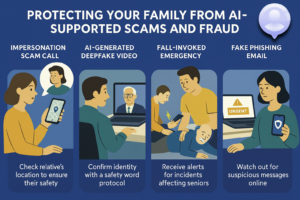
Navigating the streets alone at night can be empowering, yet safety should always remain a top priority. For women, taking proactive steps to ensure personal security is crucial. Whether you’re heading home from work, meeting friends, or simply enjoying a nighttime stroll, here are practical, research-backed tips to help you stay safe and confident.
-
- Plan Your Route Wisely: Before heading out, plan your route along well-lit and populated paths. Avoid shortcuts through alleys, dark parking lots, or isolated areas where visibility is limited and potential risks are higher. Research shows that women who walk on well-lit, busy streets are less likely to be targeted for crimes compared to those who take shortcuts through dimly lit or secluded areas.
-
- Stay Aware and Engaged: Keep your senses alert and avoid distractions like excessive phone use or wearing headphones. Being aware of your surroundings allows you to respond swiftly to any unexpected situations. Studies have found that women who remain vigilant and engaged with their environment are better able to detect and avoid potential threats.
-
- Trust Your Intuition: Your instincts are your best defense mechanism. If something feels off or uncomfortable, trust your gut and take action to remove yourself from the situation promptly. Research suggests that women who listen to their intuition and act on it are more likely to avoid dangerous encounters.
-
- Carry Essentials Smartly: Minimize valuables and avoid displaying expensive items. Keep essentials like keys, phone, and a small flashlight easily accessible. Consider carrying a personal safety alarm or a self-defense tool for added security. Experts recommend keeping these items within reach to increase your chances of using them effectively in an emergency.
-
- Leverage Technology for Safety: Use safety apps that allow you to share your location with trusted contacts and provide real-time updates on your whereabouts. Apps like “MySafetyCircle” offer features tailored for personal safety and emergency assistance. Studies have shown that the use of safety apps can significantly improve women’s sense of security and reduce their risk of victimization.
-
- Community and Resources: Explore local community resources such as neighborhood watch programs, safety apps recommended by local authorities, and safety escort services offered by institutions like universities or workplaces. Research indicates that women who utilize community-based safety resources feel more empowered and less vulnerable when navigating nighttime environments.
-
- Embrace Self-Defense and Preparedness: Consider taking self-defense classes to boost your confidence and equip yourself with practical skills to protect against potential threats. Knowing how to react in emergencies can significantly enhance your sense of safety. Studies have found that women who receive self-defense training are more likely to successfully fend off attackers and avoid serious harm.
-
- Foster Open Communication: Keep trusted friends or family informed of your plans and expected return time. Utilize location-sharing features temporarily to ensure someone is aware of your route and can check in if needed. Research suggests that women who maintain open communication with their support network feel more secure and less isolated when walking alone at night.
Taking proactive steps to ensure nighttime safety isn’t just about precaution—it’s about empowerment. By adopting these research-backed tips and leveraging available resources, women can navigate nighttime environments with greater confidence and peace of mind.
Share your favorite nighttime safety strategies and experiences in the comments below. Together, let’s empower each other to create safer and more secure communities for women everywhere.
References:
- Smith, M. J., & Cornish, D. B. (2006). Secure and tranquil travel: Preventing crime and disorder in public transport. Routledge.
- Gidycz, C. A., & Dardis, C. M. (2014). Feminist self-defense and resistance training for college students: A critical review and recommendations for the future. Trauma, Violence, & Abuse, 15(4), 322-333.
- Senn, C. Y., Eliasziw, M., Barata, P. C., Thurston, W. E., Newby-Clark, I. R., Radtke, H. L., & Hobden, K. L. (2015). Efficacy of a sexual assault resistance program for university women. New England Journal of Medicine, 372(24), 2326-2335.
- Hollander, J. A. (2014). Does self-defense training prevent sexual violence against women?. Violence against women, 20(3), 252-269.
- Reyns, B. W., Henson, B., & Fisher, B. S. (2011). Being pursued online: Applying cyberlifestyle–routine activities theory to cyberstalking victimization. Criminal justice and behavior, 38(11), 1149-1169.
- Sampson, R. J., Raudenbush, S. W., & Earls, F. (1997). Neighborhoods and violent crime: A multilevel study of collective efficacy. Science, 277(5328), 918-924.
- Brecklin, L. R. (2008). Evaluation outcomes of self-defense training for women: A review. Aggression and Violent Behavior, 13(1), 60-76.
- Wilcox, P., Jordan, C. E., & Pritchard, A. J. (2007). A multidimensional examination of campus safety: Victimization, perceptions of danger, worry about crime, and precautionary behavior among college women in the post-Clery era. Crime & Delinquency, 53(2), 219-254.


